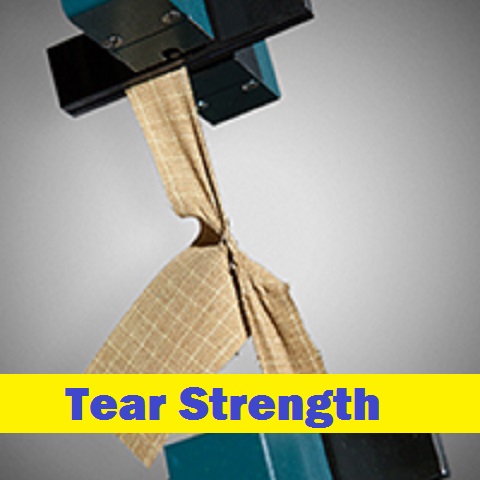- Qinsun Instruments Co., Ltd.
- Tell:+86-21-6780 0179
- Phone:+86-17740808215
- Address:No. 2578 Minhang District Gu Dai Road, Shanghai
- Contact:Mr. Li
- QQ:846490659
What is the difference between tensile strength and tear strength of fabric?

Tensile Strength and Tear Strength of fabrics are two different mechanical property indexes used to evaluate the performance of fabrics under different loading conditions.
Tensile Strength is the maximum force that a fabric can withstand when subjected to a tensile force. It is used to assess the ability of a fabric to resist stretching and breaking. Tensile Strength is usually expressed in terms of force or stress per unit width (e.g., Newtons/cm or Pascals). Tensile strength testing usually involves placing a fabric sample in a stretching device and gradually increasing the tensile force until the fabric breaks. Fabrics with higher tensile strength indicate better durability and resistance to breakage under tensile loading.

Tear Strength is the ability of a fabric to resist tearing when subjected to a tearing force. It indicates the ability of a fabric to resist tearing or cracking. Tear strength is usually expressed as a force per unit of thickness (e.g., Newtons per millimeter). Tear strength tests usually measure the force exerted at the time of tearing by creating a small rip in a fabric sample and then ripping the force along the plane of the fabric. A higher tear strength indicates that the fabric has better tear resistance.

Tensile strength evaluates the load carrying capacity and breaking properties of a fabric when subjected to tensile forces, while tear strength evaluates the tear resistance of a fabric when subjected to tearing forces. These two indexes play an important role in evaluating the mechanical properties of fabrics, but in view of practical use, we may need to pay attention to both the tensile strength and tear strength of fabrics in order to evaluate their properties more comprehensively.
Can the same fabric have different tensile strength and tear strength values?
It is possible for the same fabric to have different values for tensile strength and tear strength. Tensile strength and tear strength are influenced by various factors including the type of fibers used, the weave or construction of the fabric, the finishing treatments applied, and the measurement method and test conditions used.
Tensile strength is mainly related to the ability of the fabric to resist stretching and breaking when subjected to a pulling or stretching force. It is influenced by the strength and elasticity of the fibers, as well as the way the fibers are arranged and bonded together in the fabric structure.
Tear strength, on the other hand, focuses on the resistance of the fabric to tearing or ripping when subjected to a force that causes a small tear to propagate through the fabric. Tear strength is affected by the fabric's resistance to propagation of a tear and its ability to absorb and distribute the applied force.
Since tensile strength and tear strength are measured using different testing methods, they capture different aspects of a fabric's performance. It is possible for a fabric to have high tensile strength but relatively lower tear strength, or vice versa, depending on the specific structural properties and fiber characteristics of the fabric.
Therefore, when evaluating the overall strength and durability of a fabric, it is important to consider both tensile strength and tear strength, as they provide complementary information about the fabric's ability to withstand different types of forces and potential failure modes.





